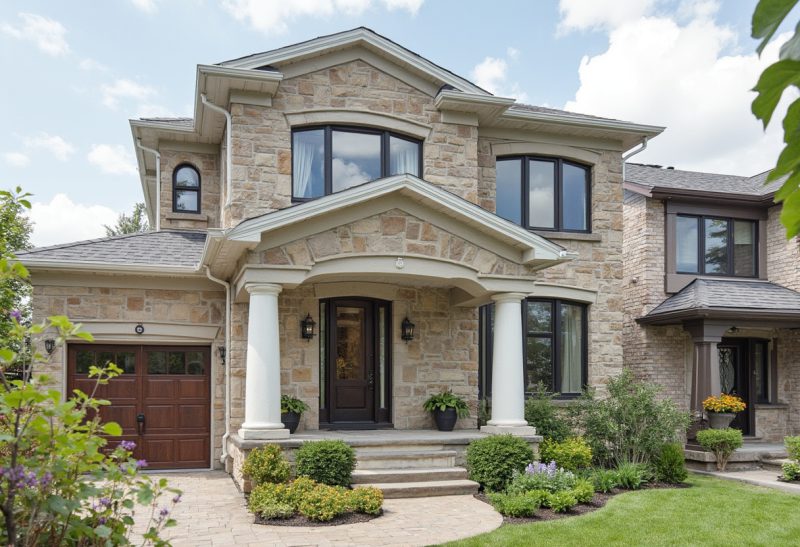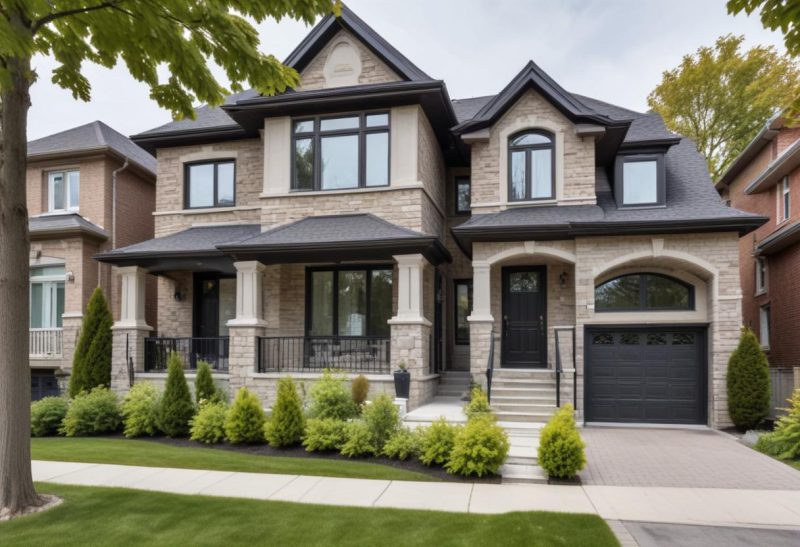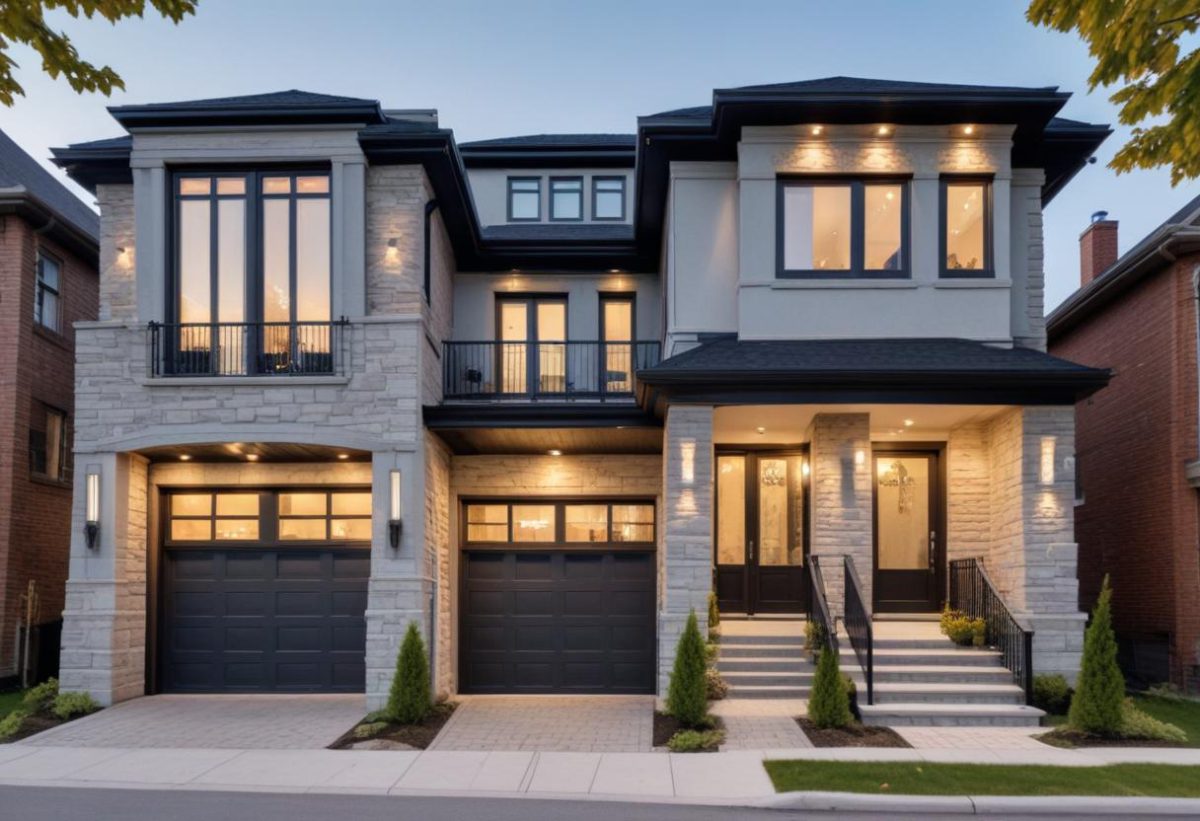1. Evaluating Your Home’s Suitability for a Second Story
Assessing the Foundation
The foundation is the most critical component when evaluating whether a home can support a second-story addition. The foundation must be strong enough to bear the weight of the new structure. To assess this:
- Hire a Structural Engineer: Before you can start adding a second story to your home, it’s important to have a qualified structural engineer check the foundation for any cracks, settling, or other issues. If there are any problems, the foundation may need to be repaired or strengthened first.
- Load-Bearing Capacity: The engineer will assess how much weight your home’s walls and foundation can support. Sometimes, extra support or strengthening might be necessary to make sure it’s safe to build a second floor.
Roof and Structural Integrity
In addition to the foundation, the existing roof and walls must be able to handle the weight and structural changes of a second-story addition. This may involve:
- Roof Removal: When adding a second story to a building, it’s usually necessary to completely remove the existing roof. This means that temporary measures need to be taken to protect the building from weather conditions during the construction process.
- Wall Reinforcements: Depending on how old your home is and its current condition, you might need to reinforce the existing walls to handle the new structure. This is particularly crucial for older homes that may have shifted over time or are constructed with less sturdy materials.
2. Navigating Zoning Laws and Building Permits in Toronto
Home additions in Toronto involves navigating the city’s zoning laws and obtaining building permits. These regulations dictate how much you can build, how high you can go, and what types of modifications are allowed.
Zoning Bylaws
Toronto’s zoning bylaws regulate land use and building dimensions. Before starting construction, you’ll need to determine whether your property is zoned for a second-story addition. Key considerations include:
- Height Restrictions: Zoning laws often specify height limits for residential buildings. These height restrictions may vary depending on the neighborhood, so it’s important to consult with the local zoning office to ensure your plans comply.
- Lot Coverage: Zoning bylaws may also dictate the total percentage of your lot that can be covered by structures. While adding a second story does not increase the footprint of your home, you’ll need to ensure the additional square footage doesn’t violate any lot coverage restrictions.
Building Permits
In Toronto, building permits are required for any structural changes, including adding a second story. The building permit process ensures that the construction complies with the Ontario Building Code and local bylaws. To obtain a permit, you’ll need to:
- Submit Detailed Plans: Your architect or contractor will need to submit detailed blueprints and construction plans that outline the design of the second story, including electrical, plumbing, and structural changes.
- Include Engineering Reports: A structural engineer’s report may be required to confirm that the foundation and walls can support the second story.
- Wait for Approval: Once submitted, the city will review your plans to ensure they meet safety and zoning regulations. This process can take several weeks, so it’s important to plan accordingly.

3.Designing the Second Story
The design of your second-story addition plays a crucial role in the success of the project. Not only should the new floor blend seamlessly with the existing structure, but it should also provide the functionality and comfort you need.
Layout and Space Planning
When planning the layout for the upper level, it’s important to think about how the new area will be utilized and how it will connect with the current rooms on the ground floor. Typical second story additions include:
- Additional Bedrooms: Numerous individuals who own homes choose to include additional bedrooms to accommodate their growing families or to provide space for guests. It’s important to ensure that there is sufficient closet space and to think about where to position windows to allow natural light into the room.
- Bathrooms: Consider adding another bathroom or ensuite to enhance the practicality and attractiveness of your home. If feasible, position the new bathroom above an existing one to make plumbing installation easier.
- Home Office: With more people working from home, adding a second-story home office provides a quiet, dedicated workspace. Ensure the room is properly insulated for soundproofing.
Matching Architectural Style
To maintain the curb appeal and cohesiveness of your home, it’s important to match the architectural style of the second story with the existing structure. This includes:
- Rooflines: The new roof should complement the existing rooflines and materials. Gable, hip, or flat roofs can be designed to suit the style of your home.
- Exterior Finishes: Choose exterior finishes, such as siding, brick, or stucco, that blend with the materials on the first floor. This creates a seamless look and ensures the second story addition doesn’t look like an afterthought.
Windows and Natural Light
Maximizing natural light is a key design consideration for second-story additions. Large windows, skylights, and dormers can bring in light, making the new space feel bright and airy. Be mindful of window placement to ensure privacy, especially in bedrooms and bathrooms.

4. Budgeting for Your Second Story Addition
Second story addition is a significant investment, and it’s important to create a detailed budget that accounts for all aspects of the project. The cost of a second-story addition in Toronto can range from $100,000 to $300,000 or more, depending on the size, complexity, and materials used.
Factors Affecting Cost
Several factors can influence the total cost of a second-story addition:
- Size of the Addition: Larger additions will require more materials and labor, increasing the overall cost.
- Structural Reinforcements: If the foundation or walls need to be reinforced, this can add a significant expense to the project.
- Materials: High-end finishes, such as hardwood flooring, custom cabinetry, and premium roofing materials, will drive up the cost. Opting for more affordable materials can help you stay within budget.
- Labor: Labor costs in Toronto can vary depending on the contractor’s experience and the complexity of the project. Be sure to get multiple quotes to find a contractor who offers competitive pricing.
Financing Options
If you don’t have the full amount available upfront, several financing options can help you fund the project:
- Home Equity Loans: These loans allow you to borrow against the equity in your home and often offer lower interest rates than other financing options.
- Construction Loans: These loans are specifically designed for home improvement projects and are typically released in stages as the work progresses.
- Personal Loans: While personal loans may have higher interest rates, they can provide the funds needed to cover immediate construction costs.
Contingency Fund
Make sure to allocate some extra money in your budget for unexpected costs like higher material prices or unexpected repairs. A good guideline is to reserve 10-20% of the total budget for these kinds of situations.
5. The Construction Process of Second Story Addition
Once the design is finalized and the necessary permits are secured, construction can begin. The construction process for a second-story addition involves several key stages, and understanding what to expect can help you prepare for any disruptions to your daily routine.
Site Preparation
Before construction begins, the worksite needs to be prepared. This includes:
- Protecting the Existing Structure: Temporary barriers and tarps will be installed to protect your home from weather and debris during roof removal and construction.
- Clearing the Area: Any outdoor furniture, plants, or structures that may be in the way should be moved to ensure a safe and efficient workspace.
Roof Removal and Framing
The first major step in the construction process is removing the existing roof. This is a critical phase, as the interior of your home will be exposed to the elements until the new roof is installed. Once the roof is removed:
- Framing: The new floor joists, walls, and roof frame will be constructed. This is where the new second story addition begins to take shape. The framing process also includes installing windows and doors.
Utilities and Systems
Next, the necessary utilities—electrical, plumbing, and HVAC—will be installed. If you’re adding bathrooms, bedrooms, or a home office, the contractor will run new plumbing lines, install electrical wiring, and ensure the HVAC system can handle the additional space.
Exterior and Interior Finishing
Once the structure is enclosed, the exterior and interior finishing can begin. This includes:
- Roofing and Siding: The new roof will be installed, and the exterior walls will be covered with siding, brick, or stucco to match the existing home.
- Insulation and Drywall: The interior walls will be insulated and covered with drywall. This step helps maintain a comfortable temperature and soundproofs the new rooms.
- Flooring and Paint: Finally, the flooring is installed, and the walls are painted. At this stage, you can begin adding personal touches, such as light fixtures, cabinetry, and furniture.
6.Final Inspections and Approvals
Before you can move into your new second story, the city of Toronto will need to conduct final inspections to ensure all work complies with the Ontario Building Code and local regulations. These inspections typically cover:
- Structural Integrity: Inspectors will verify that the foundation, walls, and roof are stable and meet safety standards.
- Electrical and Plumbing Systems: Inspectors will ensure that all electrical and plumbing work has been installed correctly and is up to code.
- Fire Safety: Fire safety measures, such as smoke detectors, proper egress, and fire-resistant materials, will be inspected.
Once the inspections are complete and the work is approved, you can obtain a certificate of occupancy, which allows you to legally inhabit the new space.
Conclusion
Adding a second story to your home in Toronto is a major renovation that can dramatically increase your living space and property value. By carefully evaluating your home’s structure, navigating zoning laws and building permits, and working with experienced professionals, you can successfully execute this transformative project.
With thoughtful design, a detailed budget, and a clear understanding of the construction process, your second-story addition will not only meet your current needs but also provide long-term value and enjoyment. Contact Maple Star today to set up a consultation and discover the exciting possibilities for your home addition in Toronto. Let us work with you to bring to life the space you’ve always imagined.


